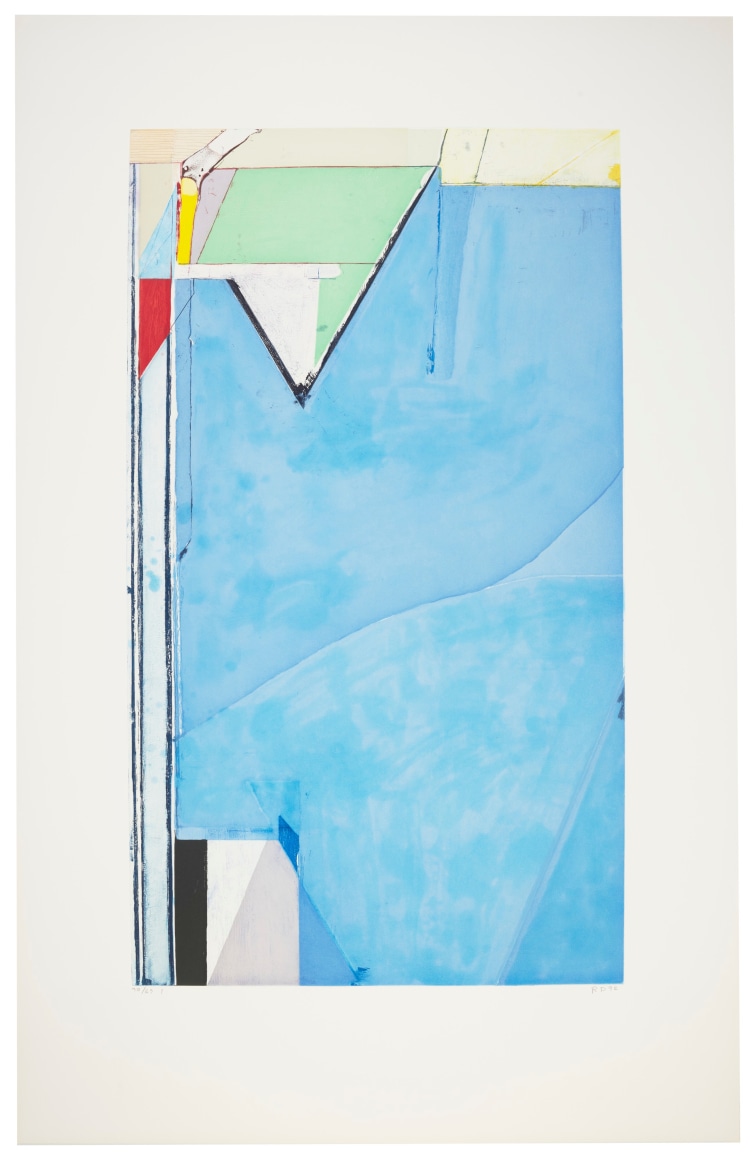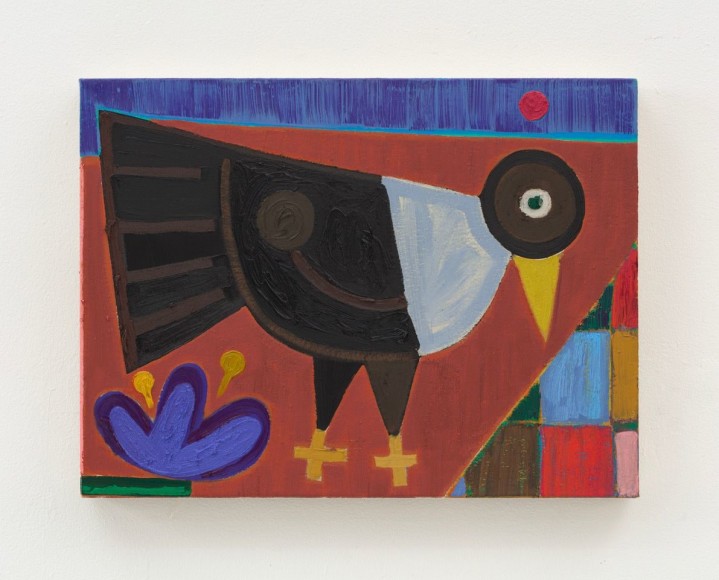“By creating these colored, paper cut-outs, it seems to me that I am happily anticipating things to come. I don't think that I have ever found such balance as I have in creating these paper cut-outs. But I know that it will only be much later that people will realize to what extent the work I am doing today is in step with the future.” — Henri Matisse, 1951
Berggruen Gallery is pleased to present Drawing with Scissors: Contemporary Works in Conversation with Matisse’s Jazz, a group exhibition inspired by the monumental set of twenty pochoir prints by French artist Henri Matisse. Drawing with Scissors will be on view at Berggruen Gallery from March 10 through April 16, 2022. The exhibition features work by:
Polly Apfelbaum | John Baldessari | Bruce Cohen | Sarah Crowner | Richard Diebenkorn | Austin Eddy
Helen Frankenthaler | David Hockney | Ellsworth Kelly | Paul Kremer | Anna Kunz | JJ Manford
Henri Matisse | Beatriz Milhazes | Robert Motherwell | Kelly Ording | Muzae Sesay
Mickalene Thomas | Jonas Wood
Drawing with Scissors: Contemporary Works in Conversation with Matisse’s Jazz recognizes Matisse’s 1947 groundbreaking series Jazz and its formal and spirited connection to works by contemporary artists. During the post-war era, while battling personal illness, Matisse turned his isolation into creative liberation. While limited in mobility and struggling to paint and sculpt, he began exploring collage and the stencil process, pochoir. Using gouache, Matisse coated sheets of paper with paint, allowed them to dry for tactile texture, then cut and arranged the sheet into intricate shapes and forms. Matisse famously described this process as “drawing with scissors” linking “line with color, contour with the surface.” His chromatic collage series, Jazz, later made into a print series, is full of songful figuration, themes of performance, and a lively blend of hopefulness and unease. Through collage, Jazz combines a vibrant array of colors and forms and has been of great inspiration to contemporary artists. Jazz is a triumph of mixed media and artistic vitality and Drawing with Scissors celebrates its legacy and the continued discourse it elicits in the present day.
Matisse’s cut-outs, also known as découpés, paved the way for new explorations in material and structural composition. Brazilian artist Beatriz Milhazes creates multilayered, vibrant works that bloom with intricacy and layered construction. Yogurt is a geometric assemblage of mixed media on paper. Milhazes notes her direct influence from Matisse’s collage works; “When I think about Matisse’s cut-outs, I think about a painter working with collage. [His compositions] a construction of colors and beauty.”[i] Sarah Crowner’s stitched canvases also push beyond medium constraints. Her sewn segments recall the inventiveness of Matisse’s cut-outs, yet her shapes, while nodding to Matisse’s, are uniquely her own. Austin Eddy creates his own collage style with paint, adjoining color and motif. Pigeon in the park, explores the space found upon a painted surface, culling texture, and patterns to reinterpret representation.
Where some artists explore Matisse’s collage technique, others respond to the artist’s fluidity of form and elegant use of color and line. Drawing with Scissors brings together distinguished drawings, collages, and prints by Ellsworth Kelly. Like Matisse, Kelly focused on the depths of simplicity. Untitled (Red/Blue) juxtaposes colors in search of balance; a reoccurring theme throughout Matisse’s découpés.
Houston based artist Paul Kremer, in a recent painting titled Cradle 01, responds to Matisse’s collage work. His buoyant shapes and colors emanate possibility and evoke the ease of Matisse’s creations in captivating motion. Kremer shares:
Matisse’s careful choreographing of palettes, his ability to convey a distinctive feeling with bold objects on flat planes of color, and the relentless positivity that emerges from his work have all been an inspiration to me. His color combinations are incomparably beautiful and surprising. And given all that was going on in his life, especially at the time of the cutouts, it’s wonderful that he made paintings feel the way they do. [ii]
Robert Motherwell and Helen Frankenthaler took to Matisse’s intuitive approach to color. For Matisse, color was an expression of the senses, and his découpés brought opportunity for new, smaller-scaled study. Frankenthaler’s painting Center Break and Motherwell’s Berggruen Series lithographs consider color, its expressive power, and its influence over us. Contemporary painter Anna Kunz responds to color in a similar, intuitive manner. She shares:
Matisse once remarked about his approach to painting being “studied carelessness”. This resonates with me because it regards the body’s knowing and the trusting of one’s intuition through practice. When I approach the canvas, I’ve got my studying done, so I can invite informed spontaneity to keep the works direct and fresh.[iii]
Other artists rejoice and react to Jazz’s gestural forms and movements. Matisse’s famed Icarus print, plate 8 in Jazz, presents an animated figure falling against a blue, sky background. Artist Mickalene Thomas draws interest and reference to Matisse’s representations of the female form. Her Sleep: Deux Femmes Noires calls attention to how cut-outs present reductive portraits, narrowing the gaze onto the subject. Working within the collage medium, Thomas reacts to fragmented representations found within canonical works like Jazz.
Matisse’s cut-outs appear within contemporary still life painting as well, enlivening interior spaces. Realist painter, Bruce Cohen, paints Matisse’s cuts-outs directly into his work, often represented beside windows suggesting the openness and depth they exude. John Baldessari’s Eight Soups appropriates Matisse’s 1912 painting, Goldfish and Sculpture, while adding his own characteristic humor and semiotic commentary. In his sublime composition, JJ Manford’s painting, Sunrise with Matisse, highlights a lively wall of cut-outs. In his own words, Manford expresses his inspiration from Matisse:
His paintings and collages retain a sense of the fun and spontaneity that went into making them; they never appear arduous or overly labored, remain both heavy and light. This is a sense that I also want to convey with my own paintings.[iv]
Drawing with Scissors additionally presents Matisse’s delicate line drawings, and their lasting influence for contemporary artists. Drawing was a central exercise for Matisse; he noted, “my line drawings are the purest and most direct translation of my emotion.”[v] This exhibition displays the intricacies of Matisse’s drawing collection, from figural expressions to still life observations. Matisse’s Nu Couché portrays the beauty of the artist’s drawing craft. He outlines the form of a woman with effortless detail and ease. Renowned artists Ellsworth Kelly, Richard Diebenkorn, and David Hockney have incorporated drawing into their own practices. Ellsworth Kelly’s delicate botanical surveys quietly depict his close observation to the shapes around him. Richard Diebenkorn’s charcoal on paper, Untitled 1963-64, recalls Nu Couché with its with mirroring simplicity and elegant demeanor. Hockney’s lithograph Black Tulips presents a singular still life, highlighting a grounded essence to his cross-medium work.
Drawing with Scissors honors Matisse’s relation to the Berggruen family. In 1953, John Berggruen’s father, Heinz Berggruen, exhibited Henri Matisse, papiers découpés, at his gallery in Paris. The presentation was the very first exhibition devoted to the cut-outs. The exhibition featured eighteen works and was widely received. Upon reflection, Heinz wrote: ‘In my opinion, the cut-outs, which verge on abstract art, have something magical about them; it is hard to say exactly what it is. Their language is profoundly lyrical, and, at the same time, monumental.”[vi]
At its core, Drawing with Scissors is a celebration of creative possibility. For Matisse, his cut-out process offered a novel conversion of artistic innovation and formal inspiration on matters of color and form. His découpés opened doors to new modes of expression for a challenging moment in his own life. Jazz is of great inspiration for contemporary artists and exudes Matisse’s long sense of curiosity and creativity.
Drawing with Scissors: Contemporary Works in Conversation with Matisse’s Jazz, March 10 – April 16, 2022. On view at 10 Hawthorne Street, San Francisco, CA 94105. Images and preview are available upon request. For all inquiries, please contact the gallery by phone (415) 781-4629 or by email info@berggruen.com.
[i] Tate. 2022. Beatriz Milhazes on Matisse – Tate Etc | Tate. [online] Available at: <https://www.tate.org.uk/tate-etc/issue-31-summer-2014/beatriz-milhazes-on-matisse> [Accessed 1 March 2022].
[ii] Paul Kremer, 2022
[iii] Anna Kunz, 2022
[iv] JJ Manford, 2022
[v] Matisse, Henri. Notes on a Painter on his Drawings. 1939. “Notes of a Painter on His Drawing.” Obelisk Art History. Accessed March 1, 2022. https://arthistoryproject.com/artists/henri-matisse/notes-of-a-painter-on-his-drawing/.
[vi] Berggruen, Hienz. Highways and Byways. Pilkington Press LTD, 1998. pg. 163.



















